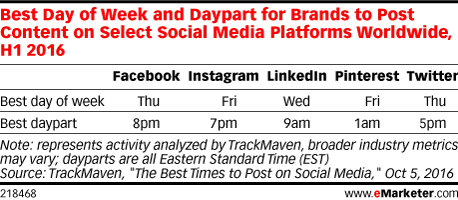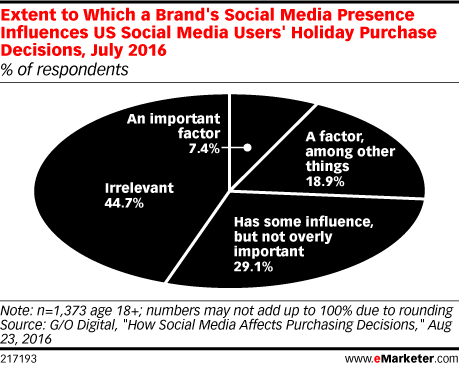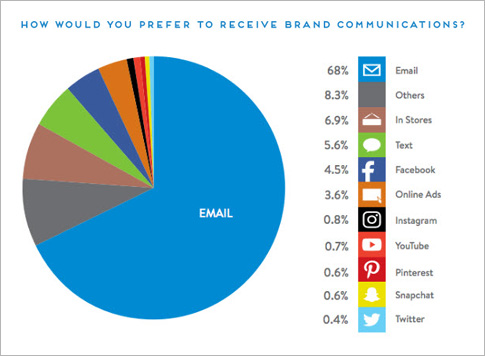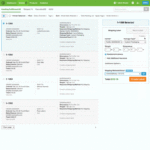Each week, we publish a mishmash of ecommerce-related, insight-infused articles for your to smash through. Just as we collect business information across all of a merchant’s channels in a single place, we’re doing the same for ecommerce-related content from a variety of top tier content creators.
Your marketing messages are likely already out and about in preparation for what’s to come in a week. But in this week’s mishmash, we’re lightly touching base on how two bastions of online marketing — social media and email marketing — stand in the eyes of your consumers, as well as how to improve and measure your performance as the holiday season gets under way.
Fighting the Noise
On social media, there’s a tremendous amount of clutter and noise vying for consumers’ attentions. Whether it’s a friend arguing about politics, the latest viral meme, a family member’s vacation photos, or cats, there are plenty of things drowning out e-retailers’ marketing messages.
So what’s the optimal time to post, the best time to defeat the noise on each major platform? A study by TrackMaven analyzing more than 17 million branded social media posts by more than 17,000 brands found that those closest to the end of the work day towards the end of the week were the best performers.
Still, social media may be an important part of your marketing mix, but that doesn’t mean it’s most important. According to a survey by G/O Digital, social media’s influence on purchase decision is marginal. Nearly half of the 1,000+ respondents called it “irrelevant,” and the the majority of the other half considering it somewhat important at best.
For consumers, social media is not the place for business; it’s the place for catching up. By and large according to a report by Bluecore, it is email that takes the place as communication channel of choice. Why? It’s considered the most transactional — there isn’t much room for noise in a one-way message between merchant and customer, and inboxes are home for plenty of marketing communications.
The study also broke down channel of choice by generations, and, although email dominated each, its supremacy varied. The older the generation, the more preferable and personal email is — 74% of baby boomers chose it, followed by 72% of Generation X, 64% of millennials, and 60% of Generation Z.
Email Makeover
But even a marketing channel as old, tried and true as email marketing needs a face lift every once in a while. Following their annual Email Marketing Industry Census, Econsultancy took away 10 ways of refreshing your email marketing. Here are some of the big ones driven by changes in consumer behavior:
- Mobile dominates — It’s a trend nearly everywhere in ecommerce that mobile is the future, and it’s no different with email. Most email is opened on mobile devices now, not your traditional desktop, and that means it’s competing with everything else mobile has to offer, from social media apps to games. Be concise, to the point, and direct when blasting email promotions if you want to secure attention.
- Engage — And if you want to get the attention of those mobile consumers, you have no choice but to engage them. Responsive design and embedded video can do the trick, helping keep their attention. But, above all else, A/B test your emails to ensure that your content, CTAs, and subject lines are getting the clicks they need.
- Email isn’t the future — You would think that an event with a bunch of email marketing pros would be optimistic about the future, but as it turns out, email’s standing as a legacy channel means it isn’t the future. It’s going to have to adapt as opposed to grow. It’s unlikely to leave us anytime soon, though (we still have direct mail, after all). To keep it relevant and fresh, e-retailers may want to consider integrating newer technologies — like social media or chat systems — with it.
Handy Tools
And alongside integrations are tools to keep your email’s performance honed and as modern as ever. Practical Ecommerce collected 19 email marketing tools — each free of charge — for merchants to utilize. From providing assistance in writing bold and clear messaging, to tools that tag URLs with custom variables that allow for better tracking of promotional performance, there’s always something sure to augment your email’s effectiveness in each of your list’s segments.
The ROI of Social
One of the often-touted perks of email is its significant ROI — some claim that for every $1 spent, there’s a return of $38. But what about social? Determining the return on social media can be tricky. It’s not as straightforward as the one way communication of email, and there are plenty of metrics to measure it by, like shares, likes, conversions, signups, etc.
But where there’s an app (or formula), there’s a way. Social Media Examiner collected 5 of the top tools for calculating your ROI — use Kissmetrics to get a holistic look at how consumers are journeying from social media posts to (hopefully) checkout page; calculate the customer lifetime value (CLV) of customers to determine how much you’re willing to spend on social media; or tap Google Analytics to pick up where your social channels leave off by tracking which webpages your visitors are converting on.
Likable Enough
Email marketing and social media preference aside, it’s safe to say that you need to be likable as a brand for your marketing messages to be impactful. Choosing a marketing channel is pointless if the message you’re sending isn’t liked. But what’s likable and not is a pretty subjective thing depending on a variety of factors.
ConversionXL lays out how to be likable as a brand, and how e-retailers can go about making the marketing messages that resonate in various ways on social and email. There are several factors that feed into your likability; attractiveness, humor, relatability, and transparency to name a few. The article’s great — it provides concrete examples of brands putting “likable” factors to action. Give it a look!






